Ongoing SEO Maintenance Checklist

Introduction
In SEO, the only constant is change itself. Where visibility is currency, securing a top spot on search engine results pages (SERPs) can mean the difference between thriving and surviving. Want to get to that number one position? Adapting to algorithm updates and best practices isn’t optional—it’s essential.
The Importance of Continuous SEO in the Digital Age
Unlike a one-off project with a clear beginning and end, ongoing SEO maintenance requires constant attention, adjustment, and commitment. As search engines like Google continue to refine their algorithms, what worked yesterday might not work tomorrow. Your website’s visibility and, by extension, its success, rely on adapting to these changes.
Continuous SEO also ensures your website not only keeps up with the latest algorithm updates but aligns with evolving user behaviours and preferences. It’s about being proactive rather than reactive, ensuring your site remains relevant, engaging, and, most importantly, findable.
Understanding Ongoing vs. One-Off SEO Tasks
Understanding the difference between ongoing and one-off SEO tasks sets the foundation for effective digital marketing.
One-off tasks, such as setting up a website or launching a specific campaign, lay the groundwork. However, SEO maintenance tasks — like keyword research, content optimisation, link building, and technical audits — are what keep the structure sound and functional over time. Think of it as the difference between building a house and making it a home; the latter requires continuous care and updates to maintain its value and comfort.
Whether you’re a seasoned SEO professional, a keen marketer, or a business owner eager to enhance your website’s performance, this checklist will provide actionable insights and introduce you to relevant SEO tools that can transform your approach to digital marketing.
Part 1: Continuous Keyword Strategy
Monthly Keyword Performance Analysis
Use tools like Mangools SERPWatcher and SEMrush to track how your keywords perform in the vast sea of search. Our SEO specialists recommend that you:
- Set up monthly performance reviews: Regularly check your keyword rankings to understand which terms are your best and worst performing.
- Stay ready to pivot: If certain keywords are losing ground, consider why. Is it because of changing search trends, or is your content in need of a refresh? Adjust accordingly.
Identifying Emerging Search Trends
Staying ahead means keeping your ear to the ground—or in this case, your eyes on Google Trends and Google Search Console. These tools are your SEO radar, helping you catch the winds of change:
- Spot new opportunities: Regularly explore Google Trends to catch emerging search behaviours that could influence your keyword strategy.
- Dig into your data: Use Google Search Console to unearth unexpected keywords that are already bringing traffic to your site. These gems could open new avenues for optimisation.
Updating Your Keyword Map
Your website is an ever-evolving ecosystem. As such, your keyword map should grow and change with it. Visual tools like MotechadoMaps can help you keep your site’s structure aligned with your SEO strategy, ensuring every page has a purpose and a direction. Here’s what to keep in mind:
- Regular revisions are key: As you add new content or pivot your focus based on trend analysis, make sure your keyword map reflects these changes.
- Ensure clarity and purpose: Every page should target a specific keyword or topic. A well-organised website is easier for users to navigate and for search engines to understand.
Tools for Ongoing Keyword Research
Reliable keyword research tools are the ultimate SEO companions. Whether you’re scouting for new terms with KWFinder or mapping the landscape with Google Keyword Planner, these tools offer the insights you need to guide your strategy:
- Look for long-tail keywords: Low-competition, high-reward. Use tools like Mangools KWFinder to uncover these valuable keywords.
- Stay informed with search volume data: Google Keyword Planner might be designed for advertisers, but it’s a treasure trove of information for SEOs too. Use it to gauge the popularity and competition of keywords.
By treating your keyword strategy as a continuous journey, you’re not just chasing after rankings—you’re building a resilient and adaptable SEO framework that can withstand the ebbs and flows of search trends. Remember, the world of search is always on the move, and so should your strategy.
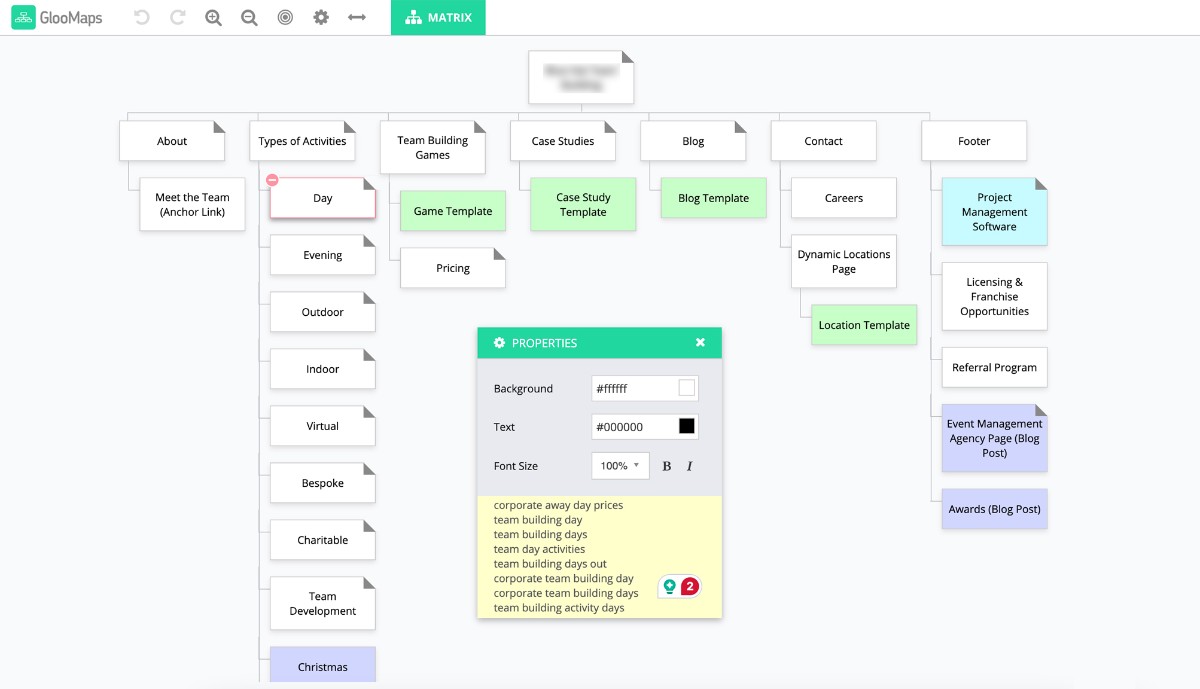
Part 2: Content Optimisation and Refresh
In this section, we’ll delve into the strategies and tools you need to keep your content fresh, relevant, and optimised for both search engines and your audience.
Quarterly Content Audit for Relevance and Quality
Content audits are crucial for maintaining a high-quality, engaging website that meets the needs of both your audience and search engines. They help identify content that’s outdated, underperforming, or no longer relevant, ensuring your site stays up-to-date and aligned with your business goals.
- Use Google Analytics and Google Search Console to track the performance of your content over time. Identify which pieces are driving traffic, engagement, and conversions.
- Revisit and update your content regularly to ensure it remains accurate and relevant. Refresh outdated statistics, incorporate new insights, and align with current trends.
- Evaluate the quality of your content by assessing its readability, structure, and value to the audience. Tools like Yoast SEO can provide insights into areas for improvement.
SEO Competitor Analysis
Keeping an eye on your competitors’ content strategies can provide valuable insights into what works well in your industry and where there might be gaps in your content. An effective competitor analysis can help refine your content strategy to outperform your rivals.
- Employ tools like Mangools SERPChecker and Semrush’s Keyword Gap to analyse your competitors’ content strategies. Identify gaps in your content and opportunities to outperform them.
- Monitor your competitors’ top-performing content and analyse their approach to keywords, topics, and formats. Adapt and innovate based on their successes and shortcomings.
- Stay updated on industry trends by regularly reviewing competitor content. This will help you remain competitive and relevant in your niche.
Updating Outdated Content with New Insights
Outdated content can harm your SEO and user experience. By injecting new life into old posts, you can increase their value, improve their ranking potential, and better meet your audience’s needs.
- Utilise AnswerThePublic to uncover fresh questions and topics that your audience is interested in. Update your content to address these queries and enhance its relevance.
- Incorporate new data, research, and case studies to provide added value and credibility to your content. This can also improve its shareability and engagement.
- Revise and expand your content to cover new developments or perspectives in your industry. This will keep it current and comprehensive for your readers.
Integrating New Keywords into Existing Content
As your industry evolves, so do the search queries of your audience. Integrating new, relevant keywords into your existing content can help capture this changing demand and drive more traffic to your site.
- Leverage tools like Google Search Console to identify new keywords and phrases that are gaining traction in your niche. Incorporate these into your existing content to improve its visibility and relevance using tools like Yoast SEO.
- Update your meta tags, headings, and body content to include new keywords. Ensure that the integration is natural and enhances the readability of your content.
- Monitor the performance of your updated content to assess the impact of the new keywords on its search rankings and traffic. Adjust your strategy as needed based on the results.
Recommended Tools for Content Analysis
The right tools can make content analysis more efficient and effective, helping you identify opportunities for improvement and track the impact of your optimisations.
- SEMrush Content Audit offers a comprehensive analysis of your content’s performance, highlighting areas for optimisation and improvement.
- Ahrefs Content Gap helps you identify content opportunities by comparing your content with that of your competitors.
By regularly auditing your content, staying attuned to emerging trends, updating your content with fresh insights, and leveraging the right tools, you can ensure that your content remains a powerful asset in your SEO maintenance strategy.
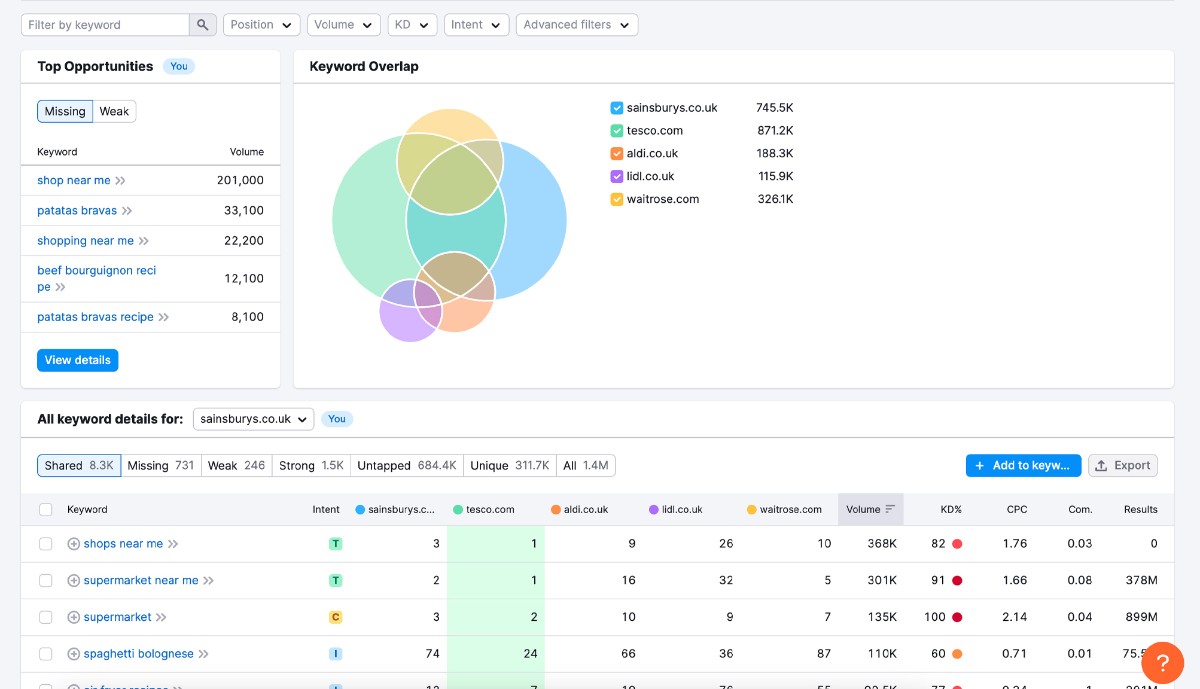
Part 3: Technical SEO Maintenance
Regular maintenance ensures your site remains fast, accessible, and primed for ranking success. Here’s a practical guide to the ongoing tasks and tools essential for keeping your technical SEO in top shape:
Weekly Website Health Checks: Speed and Mobile Usability
Speed and mobile usability aren’t just nice-to-haves—they’re crucial for user satisfaction and SEO. A sluggish site or poor mobile experience can tank your rankings and alienate potential visitors.
- Leverage Google Lighthouse to perform comprehensive performance, accessibility, and SEO audits. It’s a versatile tool that provides insights into how to enhance your site’s speed and mobile usability.
- Utilise Bing’s Mobile Friendliness Test Tool for additional perspective on your site’s mobile performance. It offers actionable feedback to ensure your site delivers a stellar mobile experience.
Monthly Crawling and Indexing Reviews
Search engines need to crawl and index your site efficiently to understand and rank your content appropriately. Regular checks can uncover issues that hinder this process, ensuring search engines have a current map of your site.
- Utilise Google Search Console to monitor your site’s indexing status, inspect URLs, and identify any crawl errors. Address these issues promptly to ensure optimal indexing.
- Conduct a monthly crawl of your website using tools like SEMRush Site Audit. This will help you identify broken links, duplicate content, and other technical issues that may impact your site’s SEO.
Handling 404 Errors and Redirect Issues
Broken links and improper redirects not only hurt your SEO but also lead to poor user experiences. Keeping on top of these errors maintains your site’s integrity and navigability.
- Use SEMRush Site Audit or similar tools to identify and fix broken links and 404 errors on your site. Regularly updating your internal links ensures a smooth navigation experience for users and search engines.
- Implement 301 redirects for any permanently moved pages using the 301 Redirection Plugin or through your site’s .htaccess file. This helps preserve link equity and direct users and search engines to the correct pages.
Regular Core Web Vitals Monitoring
Core Web Vitals are Google’s way of measuring the health of your site’s user experience. They focus on loading performance, interactivity, and visual stability, directly impacting your search rankings.
- WPRocket can significantly improve your site’s loading time, directly influencing your Core Web Vitals scores.
- Focus on optimising the Largest Contentful Paint (LCP), First Input Delay (FID), and Cumulative Layout Shift (CLS) to meet Google’s recommended thresholds and enhance user experience.
- Google Lighthouse and Google PageSpeed Insights provide detailed reports on your site’s performance, offering specific suggestions for improving your Core Web Vitals.
The Importance of HTTPS for Security and SEO
Securing your website with HTTPS isn’t just about protecting user data; it’s also a crucial factor for SEO. Google has explicitly stated that HTTPS is a ranking signal, and browsers like Chrome mark non-HTTPS sites as ‘not secure,’ which can deter visitors. Here’s how to ensure your site is secure:
- Obtain an SSL Certificate: Acquire an SSL certificate from a reputable provider and install it on your server. This encrypts data transmitted between your server and your visitors’ browsers, safeguarding sensitive information.
- Redirect HTTP to HTTPS: Implement 301 redirects from your HTTP pages to their HTTPS counterparts. This ensures that search engines and users are directed to the secure version of your site.
- Update Internal Links: Modify all internal links to use HTTPS. This prevents mixed content issues and ensures a secure browsing experience.
Essential Technical SEO Tools
A set of reliable technical SEO tools is indispensable for maintaining the health and performance of your website.
- SEMRush Site Audit offers comprehensive insights into your site’s technical SEO, including crawlability, site performance, and security issues.
- Google Lighthouse and Google Page Speed Insights are invaluable for analysing your site’s performance and providing recommendations for speed optimisation.
- Google Search Console is essential for monitoring indexing status, crawl errors, and Core Web Vitals.
- BrokenLinkChecker.co.uk helps you identify and fix broken links, ensuring a seamless navigation experience for users.
- WPRocket is a caching plugin that can significantly improve your site’s loading speed and overall performance.
By integrating these practices and tools into your regular SEO routine, you can ensure your site remains in optimal health, both in the eyes of search engines and your users. Regular technical SEO maintenance isn’t just about fixing problems—it’s about proactively optimising for the future, ensuring that your site continues to serve your business goals and meet the needs of your audience effectively.
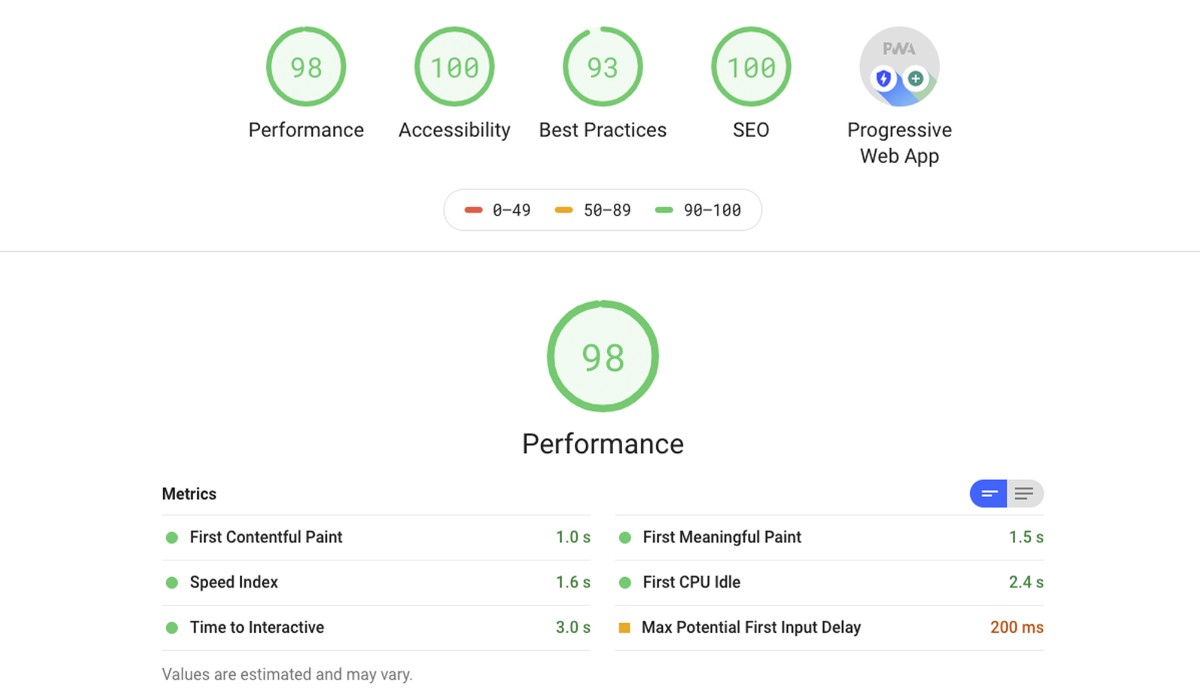
Part 4: Building and Managing Your Link Profile
In this section, we’ll discuss how to build and manage a robust link profile that can enhance your website’s authority and search engine rankings.
Monthly Backlink Quality Check
Regularly monitoring the quality of your backlinks is crucial to ensure they’re contributing positively to your SEO.
- Use SEMrush Backlink Analytics to analyse the quality of your backlinks. Look for backlinks from high-authority sites relevant to your niche.
- Check for toxic links with Backlink Checker by Ahrefs. Toxic links from low-quality or spammy sites can harm your SEO, so it’s important to identify and address them promptly.
Strategies for Acquiring High-Quality Backlinks
High-quality backlinks are a signal to search engines that your site is a valuable resource. Here are some strategies to acquire them:
- Become a Source For Reporters and Bloggers (HARO): Use platforms like HARO to provide expert insights and get backlinks from reputable news sites and blogs.
- Publish “Skyscraper” Content: Create comprehensive and high-quality content that naturally attracts backlinks.
- Build Links From Outdated Resources: Identify outdated content in your niche and offer your updated content as a replacement to the site owners.
- Use Content Formats Proven To Generate Links: Infographics, data studies, and original research are content formats that tend to attract more backlinks.
- Publish Ultimate Guides: Comprehensive guides on specific topics are valuable resources that can earn backlinks from various sources.
- Use Branded Strategies and Techniques: Develop unique strategies or techniques in your field and name them. This can lead to natural backlinks when others reference your method.
- Authority Resource Pages: Reach out to websites that curate resource pages in your niche and suggest adding your content.
- Forge Partnerships with Influencers: Collaborate with influencers in your niche to co-create content or feature their expert opinions. Their endorsement can lead to valuable backlinks and enhanced visibility.
- Leverage Community Events: Host or sponsor local events and engage with community blogs and forums. This can earn you backlinks from local news outlets and community websites.
Cleaning Up Toxic Links
Toxic backlinks can drag down your SEO efforts. Regularly cleaning up these links is essential:
- Use the Google Disavow Tool: If you’ve identified toxic backlinks that you can’t remove through outreach, use the Google Disavow Tool to tell Google to ignore them.
- Monitor your link profile with SEMrush Backlink Analytics: Keep an eye on your backlink profile and take action when you spot harmful links.
Tools for Effective Link Profile Management
Effective link profile management requires the right tools. Here are some that can help:
- Mangools Link Miner: A tool for finding and evaluating backlinks, helping you identify opportunities and track your link-building efforts.
- SEMrush Link Building Tool: This tool helps you streamline your link-building process, from finding prospects to tracking your progress.
- Ahrefs Backlink Checker: A comprehensive tool for analysing your backlink profile and identifying toxic links.
- Google Disavow Tool: Essential for disavowing harmful links that can’t be removed manually.
By implementing these strategies and regularly monitoring your link profile, you can build a strong backlink portfolio that boosts your SEO and enhances your website’s authority and visibility in search engine results.
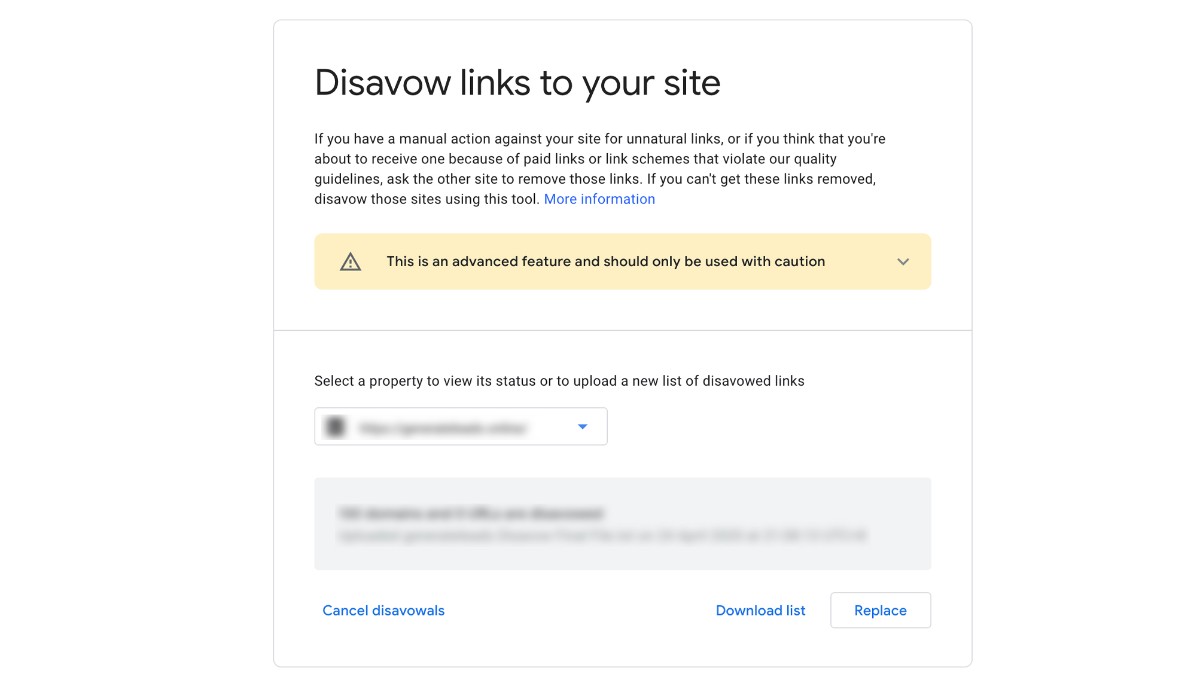
Part 5: User Experience and Engagement
First impressions are often your only chance to engage visitors. The intersection of SEO and user experience (UX) is where this first impression is crafted. Part 5 of our ongoing SEO maintenance checklist dives into the critical elements of User Experience and Engagement, ensuring your site attracts visitors and keeps them engaged.
Enhancing Site Navigation and User Journey
A seamless navigation experience is the backbone user engagement:
- Simplify Your Menu: Keep your site’s navigation menu simple and intuitive. Use clear, descriptive labels that speak directly to the user’s intent.
- Implement a Logical Structure: Your site should flow logically, with a hierarchy that naturally guides users deeper. Tools like MotechadoMaps can help visualise and plan your site structure.
- Breadcrumbs: Not just for fairy tales, breadcrumbs are a navigational must. They help users trace their path back and understand their current location on your site.
Improving Page Load Times for Better Engagement
Speed is everything. A slow-loading page is a fast track to a high bounce rate:
- Optimise Images: Tools like TinyPNG can drastically reduce image sizes without sacrificing quality, speeding up load times.
- Minimise HTTP Requests: Consolidate files where possible. Fewer files mean fewer requests, equating to faster loading times.
- Use a Content Delivery Network (CDN): Distribute your content across various geographical locations to decrease load times for users no matter where they are. Cloudflare offers free and paid CDN solutions suitable for businesses of all sizes.
Monitoring and Optimising for Bounce Rate
A high bounce rate can signal that your site’s content or user experience isn’t meeting user expectations. Lowering your bounce rate can significantly improve your site’s SEO performance and user satisfaction:
- Content Relevance: Ensure your content accurately reflects the search queries leading users to your site. Google Analytics can help identify pages with high bounce rates, signalling a mismatch between content and user expectations.
- Engaging Content: Use engaging headings and subheadings to break up text and keep users interested. Incorporate multimedia elements like images and videos to enhance the reading experience.
- Call to Action (CTA): Every page should have a clear CTA, guiding users to the next step, whether it’s reading another article, signing up for a newsletter, or making a purchase.
Tools to Analyse User Experience
Several tools can help you analyse and improve the user experience on your website:
- WPRocket can improve your site’s speed by optimising its performance.
- HotJar and Crazy Egg offer heat mapping and user session recording to see how users interact with your site, providing invaluable insights into UX improvements.
- Microsoft Clarity is a free tool that offers similar insights into user behaviour, allowing for A/B testing and more.
- Google Analytics remains an indispensable tool for understanding user behaviour, traffic sources, and engagement metrics on your site.
Optimising for user experience is a continuous process that requires regular monitoring and adjustment. By focusing on these key areas, you can create a website that not only ranks well in search engines but also provides a memorable and positive experience for your visitors.
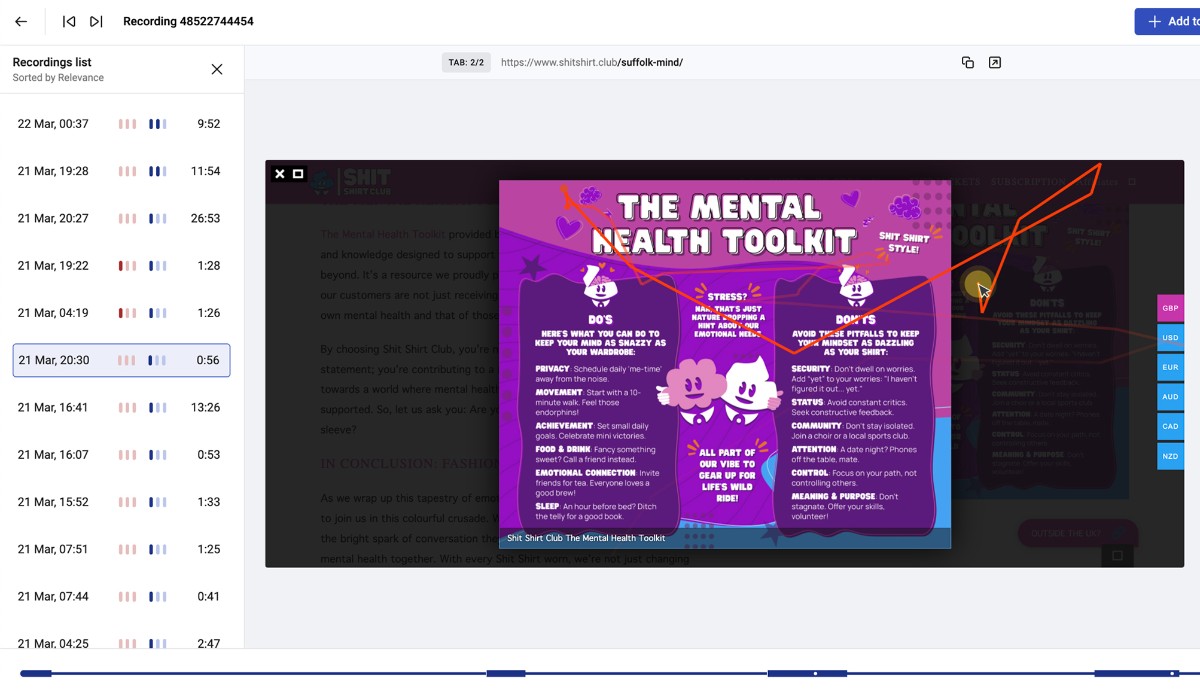
Part 6: Local SEO and Voice Search Optimisation
The ways people search for information are constantly evolving. In Part 6 of our ongoing SEO maintenance checklist, we look into the critical aspects of local SEO and voice search optimisation, ensuring you’re ready for the rising trend of voice-activated search:
Regular Updates to Your Google Business Profile Listing
Your Google Business Profile (formerly Google My Business) is often the first point of contact between your business and potential local customers. Keeping this listing updated is crucial for local SEO success.
- Accuracy is Key: Ensure your business name, address, and phone number (NAP) are consistent across all online platforms.
- Operating Hours: Regularly update your operating hours, especially during holidays or special events, to avoid disappointing potential customers.
- Respond to Reviews: Engage with customers by responding to reviews. Positive interactions can boost your business’s reputation and visibility.
Optimising for Local Search Queries
Local search queries often include location-specific keywords. Tailoring your content to these queries can significantly improve your local search rankings.
- Use Local Keywords: Incorporate location-specific keywords into your site’s content. Tools like SEMrush and Google Keyword Planner can help identify local search terms relevant to your business.
- Local Landing Pages: For businesses with multiple locations, create dedicated landing pages for each location, complete with unique content and NAP details. Include local news, events, and testimonials to make the content as relevant as possible to the local audience.
Preparing Your Content for Voice Search
With the rise of smart speakers and voice assistants, optimising your content for voice search is becoming increasingly important.
- Natural Language: Voice searches are often more conversational. Use natural language and long-tail keywords that mimic how people speak.
- Question-Based Content: Many voice searches are question-based. Include FAQs or Q&A sections that directly answer common questions related to your business. Use Answer The Public to find common questions around your keywords and craft content that answers these queries.
- Structured Data: Implement structured data (such as FAQ schema) to help search engines understand and categorise your content better, increasing the chances of it being used to answer voice queries.
- Local Intent: Voice searches often have local intent. Optimise for phrases like “near me” or “in [City Name]” to capture this audience.
Tools for Local SEO and Voice Search Insights
Leveraging the right tools can significantly enhance your local SEO and voice search optimisation efforts:
- MoZ Local and BrightLocal: Both platforms offer comprehensive solutions for managing local listings, monitoring reviews, and auditing your local SEO performance.
- SEMrush Listing Management: Easily distribute your business information across the most authoritative directories and track your local rankings.
- Answer The Public: Gain insights into the questions your audience is asking to better align your content with voice search queries.
- Google Business Profile and Bing Places: Use these tools to manage your business listings directly on Google and Bing, ensuring they’re accurate and comprehensive.
Local SEO and voice search optimisation are about connecting with your community and being accessible through the technologies they use every day.
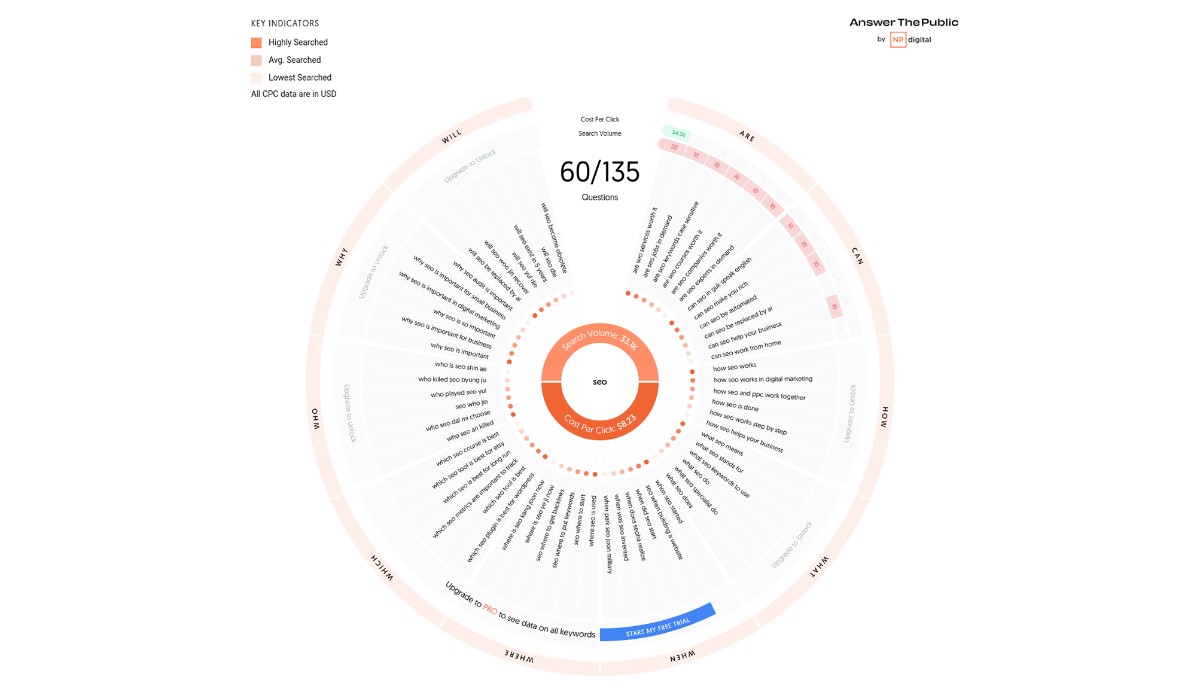
Part 7: Social Signals and Off-Page SEO
It’s crucial to spotlight the interplay between social signals and off-page SEO. Social platforms and brand mentions carry a weight that, when leveraged correctly, can significantly bolster your SEO efforts.
Engaging with Your Audience on Social Media
Social media isn’t just about broadcasting; it’s about sparking conversations and building relationships.
- Consistent Engagement: Regularly post content that resonates with your audience and join the conversation. Reply to comments, participate in discussions, and be genuinely involved.
- Live Sessions and Q&As: Host live sessions or Q&A segments to directly engage with your audience. These interactions foster community and increase engagement rates.
Encouraging Social Shares for SEO Benefit
Social shares act as indirect SEO signals, increasing your content’s reach and potential backlink opportunities.
- Share-Worthy Content: Create content that provides value, evokes emotion, or satisfies curiosity. High-quality, engaging content is more likely to be shared.
- Easy Sharing Options: Incorporate social sharing buttons on your content pages to make it effortless for visitors to share your content on their social networks.
Monitoring Brand Mentions Across the Web
Brand mentions, whether linked or unlinked, contribute to your brand’s visibility and authority.
- Set Up Alerts: Tools like Google Alerts and Mention enable you to monitor mentions of your brand across the web in real-time.
- Engage with Mentions: Respond to positive mentions to show appreciation and address negative mentions diplomatically to maintain your brand’s reputation.
Tools for Social Media and Brand Monitoring
Optimising your off-page SEO and managing social signals requires the right toolkit. Here are some indispensable tools:
- Hootsuite and Buffer: Schedule and publish content across multiple social media platforms. Analyse engagement and adjust your strategy based on data-driven insights.
- BussSumo: Discover content ideas, identify influencers, and track your brand mentions and content’s performance across social media.
- Google Alerts and Mention: These tools offer comprehensive monitoring of your brand mentions across the internet, alerting you to potential engagement opportunities or reputation management needs.
The role of social signals and off-page SEO is undeniably significant. By engaging with your audience, encouraging social shares, and vigilantly monitoring your brand’s online mentions, you not only enhance your SEO but also foster a brand community. Leveraging our suggested tools empowers you to streamline these efforts, ensuring your brand remains resonant and robust.
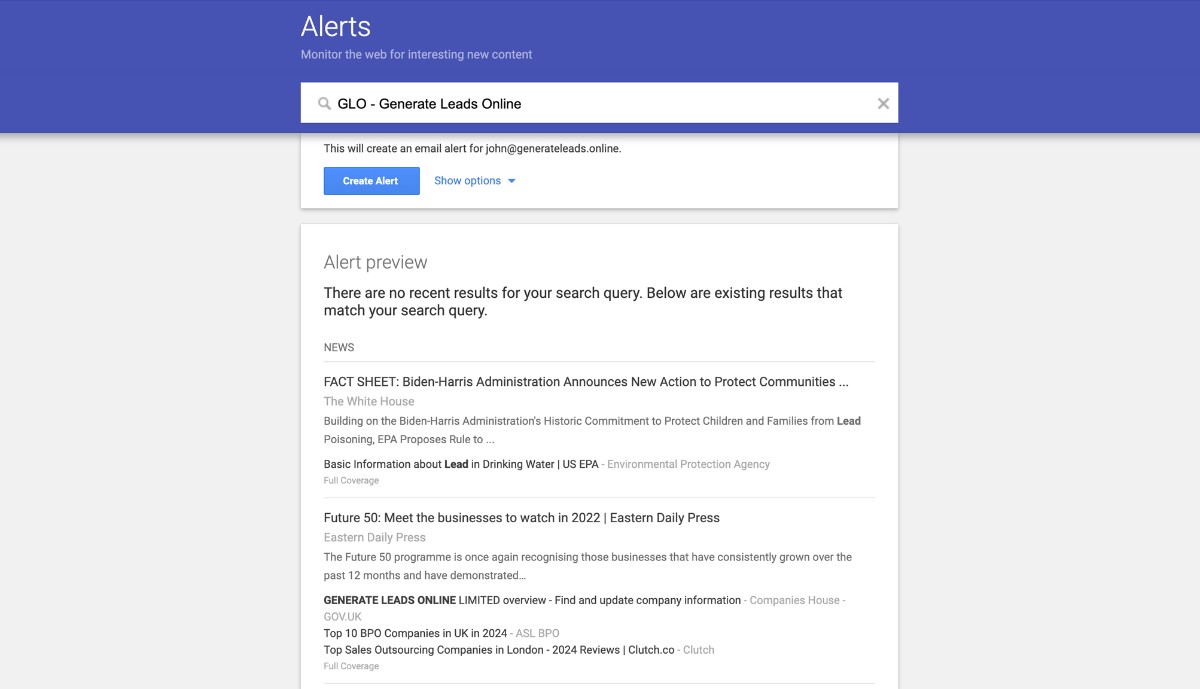
Part 8: Staying Updated with SEO Trends and Algorithm Changes
This part of our ongoing SEO maintenance checklist is dedicated to ensuring you remain at the forefront of SEO updates, ready to adapt and thrive in SERPs.
Keeping Abreast of Search Engine Algorithm Updates
Search engines are continually refining their algorithms to provide users with the most relevant, high-quality results. Here’s how you can stay informed:
- Subscribe to Official Blogs: Follow official blogs of search engines like Google’s Search Central Blog for firsthand updates on algorithm changes.
- Use Algorithm Tracking Tools: Tools like Moz’s Google Algorithm Change History provide a comprehensive timeline of updates, helping you correlate changes in your website’s performance with specific algorithmic shifts.
Adapting to New SEO Best Practices
As algorithms evolve, so do the best practices for optimising your site. Embrace these changes to ensure your SEO strategy remains effective:
- Continuous Learning: Dedicate time to learn about new techniques and strategies in SEO. Online courses, webinars, and industry conferences are great resources for staying updated.
- Experimentation: Test new tactics and approaches on your website. Use A/B testing to gauge the impact of changes and refine your strategy accordingly.
SEO News Sources and Resources
In addition to official channels, there are numerous reputable sources where you can get the latest SEO news and insights:
- Search Engine Journal: An authoritative source for SEO news, trends, and guides. Their articles and webinars are a treasure trove of knowledge for SEO professionals.
- Search Engine Land: Renowned for its up-to-date coverage of SEO, PPC, and digital marketing news. Their in-depth analysis and expert columns provide valuable perspectives on the industry.
- SEO Podcasts and Blogs: Subscribe to popular SEO podcasts like The Search Engine Journal Show or follow influential SEO blogs to get regular updates and actionable tips.
By actively engaging with the SEO community, leveraging reliable resources, and embracing continuous learning, you can ensure that your SEO strategy remains robust and responsive.
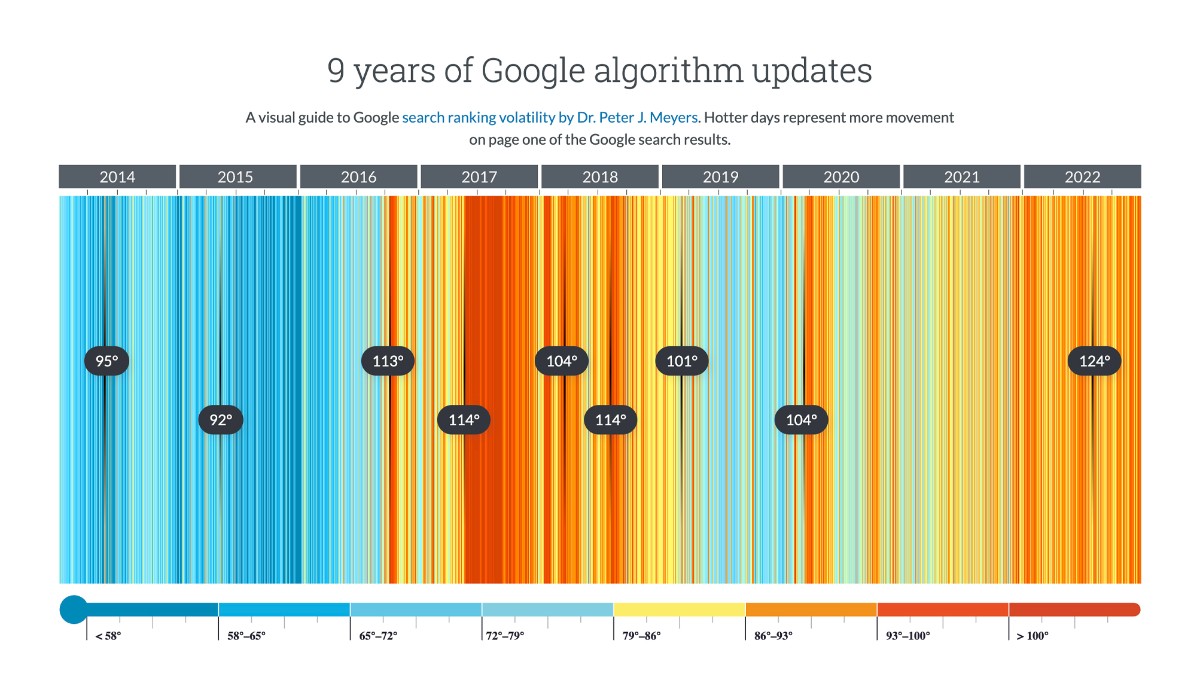
Part 9: Reporting and Analytics
This chapter focuses on the vital process of monitoring, reporting, and analysing your SEO efforts. It’s this continuous loop of feedback that allows for the refinement and adjustment necessary to sail the ever-changing seas of SEO. Here’s how to set up an effective reporting system, understand the key metrics that matter, and choose the right tools for the job:
Setting Up Monthly SEO Performance Reports
A well-structured SEO report helps you understand where you’re heading and adjust accordingly. Monthly reports should be comprehensive yet digestible, providing clear insights into what’s working and what isn’t. To achieve this:
- Establish Clear Objectives: Before you start, know what you’re tracking and why. Your report should align with your SEO goals, whether it’s improving organic traffic, increasing conversion rates, or boosting keyword rankings.
- Automate Where Possible: Use tools that allow for automatic data collection and report generation. This will save you time and ensure you’re consistently measuring performance at regular intervals.
Key Metrics to Monitor for SEO Success
To gauge the effectiveness of your SEO strategy, pay close attention to these key performance indicators (KPIs):
- Organic Traffic: The lifeblood of SEO. An increase in visitors from search engines indicates your content is ranking well and attracting your target audience.
- Keyword Rankings: Track how your pages rank for target keywords over time. Improvements in rankings can lead to increased visibility and traffic.
- Conversions: Ultimately, SEO is about more than just driving traffic—it’s about driving the right traffic that converts. Monitor how well your organic traffic performs in terms of completing desired actions on your site.
- Backlink Profile: The quantity and quality of backlinks to your site can significantly impact your domain authority and search rankings. Keep an eye on new backlinks and monitor for any toxic links that may harm your site.
Tools for SEO Reporting and Analytics
Leveraging the right tools can dramatically streamline your reporting process and provide deeper insights into your SEO performance. Consider incorporating these tools into your arsenal:
- Google Analytics: The cornerstone of any digital marketing reporting toolkit. Use it to track organic traffic, user behaviour, and conversion metrics.
- Google Search Console: Provides invaluable insights into how Google views your site, including search queries that bring users to your site, your site’s indexing status, and issues that need to be addressed.
- SEMrush, SERPWatcher or Ahrefs: Both tools offer comprehensive SEO suites that include keyword tracking, site audits, backlink analysis, and competitor research. They also feature robust reporting capabilities that can be customised to your needs.
- Looker Studio: Google’s Looker Studio can pull data from various sources, including Google Analytics and Search Console, to create customisable, visually appealing reports.
In SEO, what you measure can be just as important as how you measure it. By setting up efficient, insightful reporting and analytics, you’re not just looking back on past performance; you’re laying the groundwork for future success. Keep your finger on the pulse of your SEO efforts, and use the data you collect to continually refine and improve your strategy.
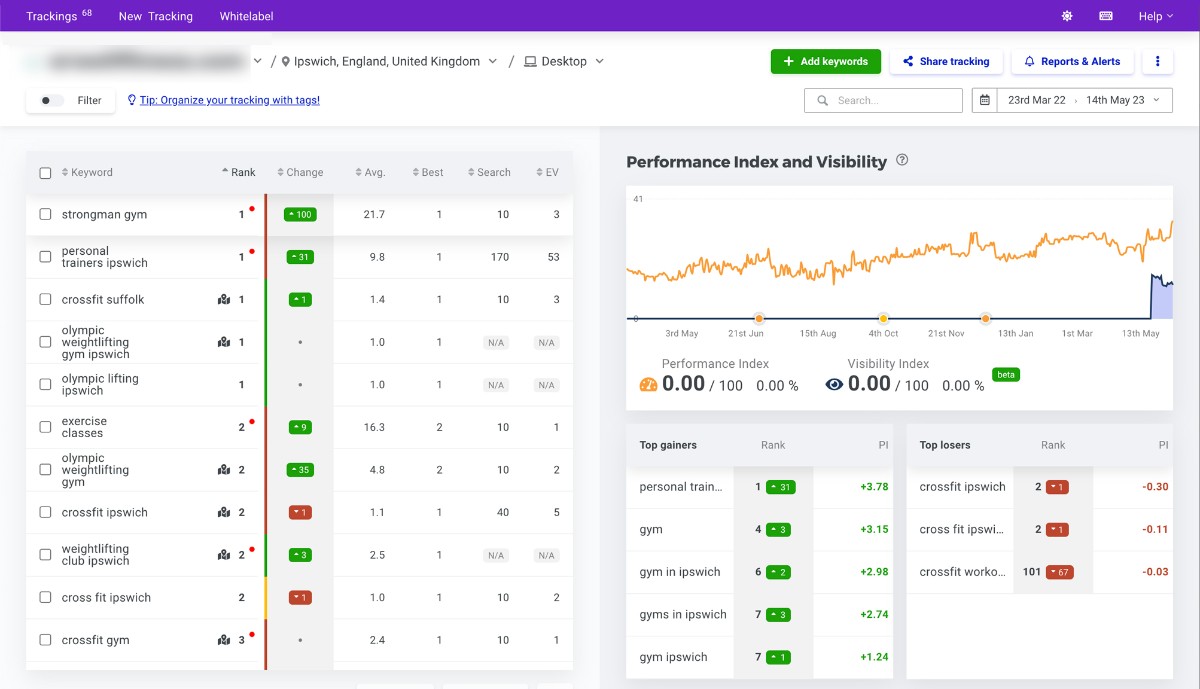
Part 10: Creating an SEO Maintenance Action Plan
As we reach the culmination of our comprehensive guide, it’s crucial to distil the insights and strategies into a coherent, actionable plan that keeps your website’s SEO journey on the path to continuous improvement. Creating an ongoing SEO maintenance action plan not only provides a roadmap for success but also ensures that SEO remains a central, dynamic part of your digital marketing strategy. Here’s how to bring it all together:
Monthly Task Checklist for SEO Maintenance
A successful SEO strategy thrives on consistency and adaptability. To maintain and improve your website’s search engine visibility, consider the online monthly task checklist explained in this blog post:
- Continuous Keyword Strategy: Regularly analyse keyword performance, update your keyword map, and stay alert to emerging search trends.
- Content Optimisation and Refresh: Conduct quarterly content audits, update outdated content, and integrate new keywords into existing content.
- Technical SEO Maintenance: Perform weekly health checks on website speed and mobile usability, review crawling and indexing monthly, and monitor Core Web Vitals.
- Building and Managing Your Link Profile: Execute monthly backlink quality checks, pursue strategies for acquiring high-quality backlinks, and clean up toxic links.
- User Experience and Engagement: Enhance site navigation, improve page load times, and monitor bounce rates to foster better user engagement.
- Local SEO and Voice Search Optimisation: Regularly update your Google Business Profile, and optimise for local and voice search queries.
- Social Signals and Off-Page SEO: Engage with your audience on social media, encourage social shares, and monitor brand mentions across the web.
- Staying Updated with SEO Trends and Algorithm Changes: Keep abreast of SEO news and adapt to new best practices.
- SEO Reporting and Analytics: Set up monthly SEO performance reports to track key metrics and analyse your SEO efforts.
Setting Realistic SEO Goals and Expectations
Understanding the nature of SEO—its potential impact as well as its limitations—is fundamental to setting realistic goals and expectations. SEO is a long-term investment that requires patience, persistence, and a commitment to quality content and user experience. When crafting your SEO action plan:
- Define Clear, Measurable Objectives: Whether it’s increasing organic traffic by a certain percentage, improving rankings for specific keywords, or boosting conversion rates, your goals should be specific, measurable, achievable, relevant, and time-bound (SMART).
- Understand SEO is a Marathon, Not a Sprint: SEO efforts often take months to show results. Setting realistic timeframes and managing stakeholders’ expectations accordingly is crucial for sustained efforts and support.
Allocating Resources for Continuous SEO Efforts
SEO demands ongoing attention and resources. To ensure your SEO action plan is sustainable and effective:
- Dedicate Time: Allocate regular time for SEO tasks, whether it’s daily monitoring or monthly audits. Consistent effort pays off in the long run.
- Invest in Tools: Leverage SEO tools that streamline your workflow, provide actionable insights, and help you stay competitive.
- Educate Your Team: SEO is multifaceted and touches many aspects of your digital presence. Ensure your team understands the basics of SEO and how they can contribute.
- Seek Expertise When Needed: Don’t hesitate to consult with an SEO agency such as Motechad for specialised tasks or when facing challenging obstacles.
Conclusion
The Never-Ending Cycle of SEO
Search engines never rest, constantly refining their algorithms to deliver the most relevant and high-quality results to users. In response, your SEO strategy must be dynamic, evolving with search engines and user behaviours.
Embracing the cycle of continuous SEO optimisation means regularly revisiting your keyword strategies, refining your content, staying vigilant about technical health, nurturing your link profile, enhancing user experience, and more. Each element of your SEO campaign demands regular attention and adjustment. By doing so, you not only maintain your search engine rankings but also seize opportunities to ascend higher, capture more traffic, and ultimately, drive conversions and achieve your business objectives.
